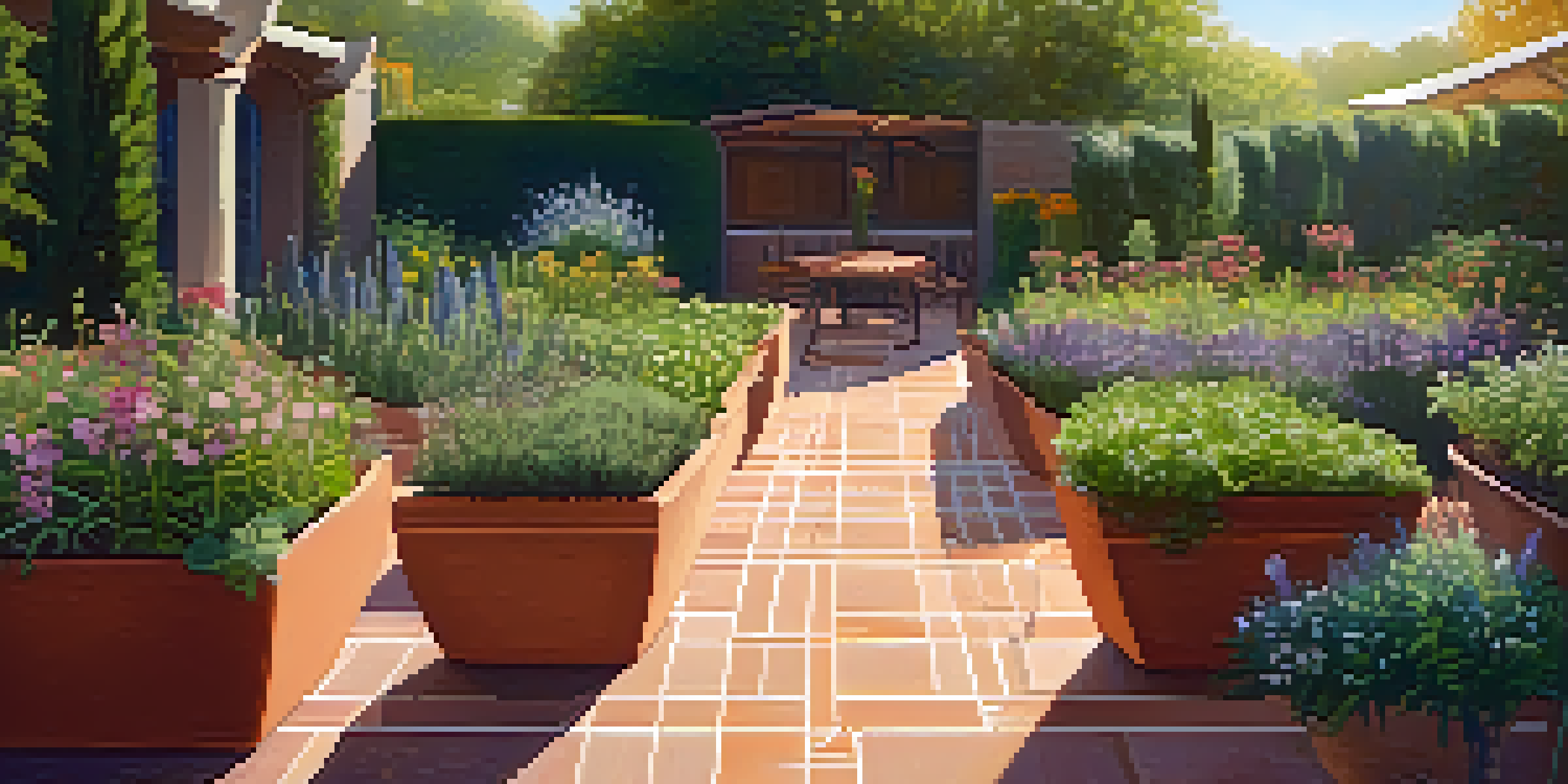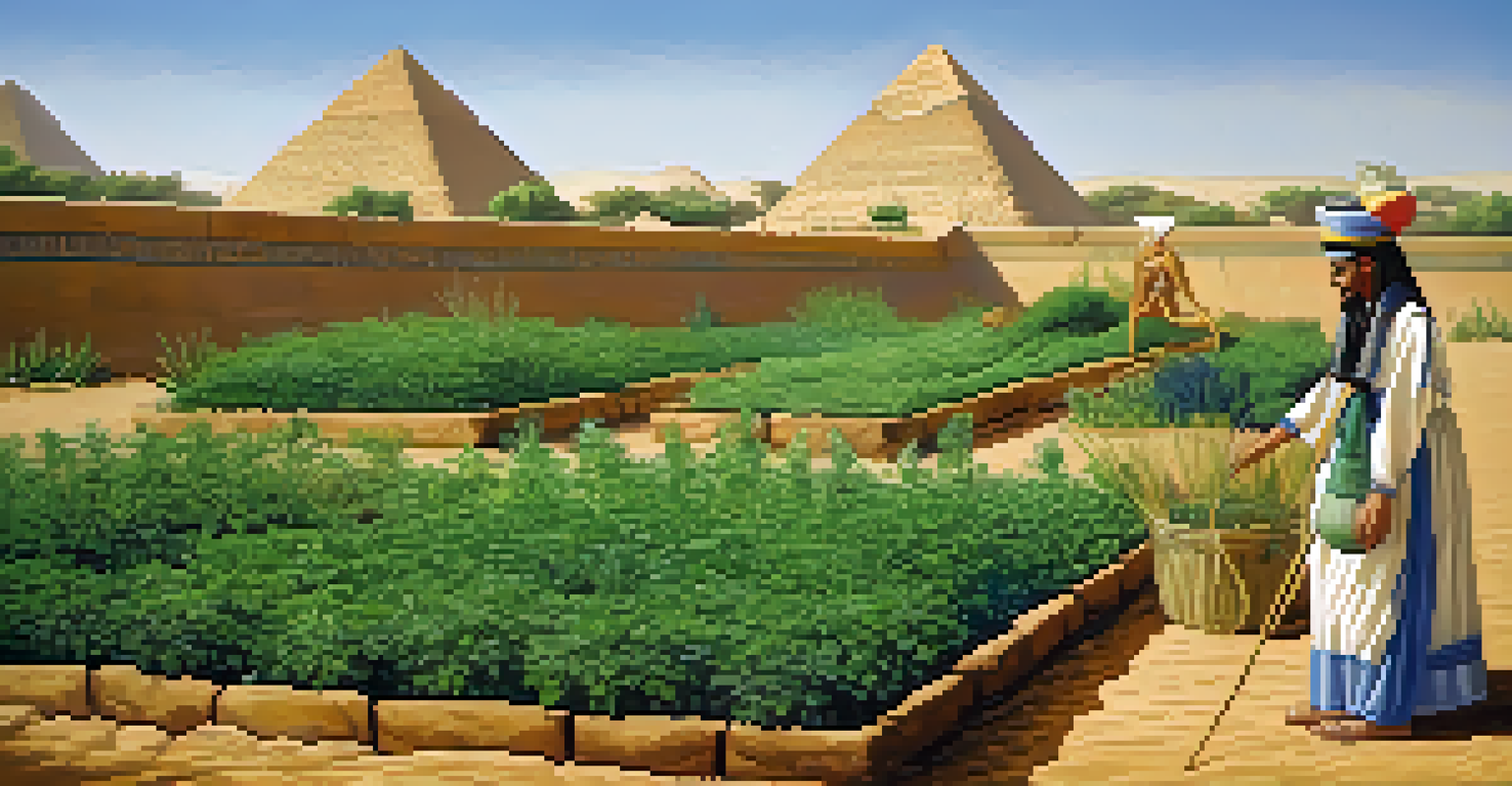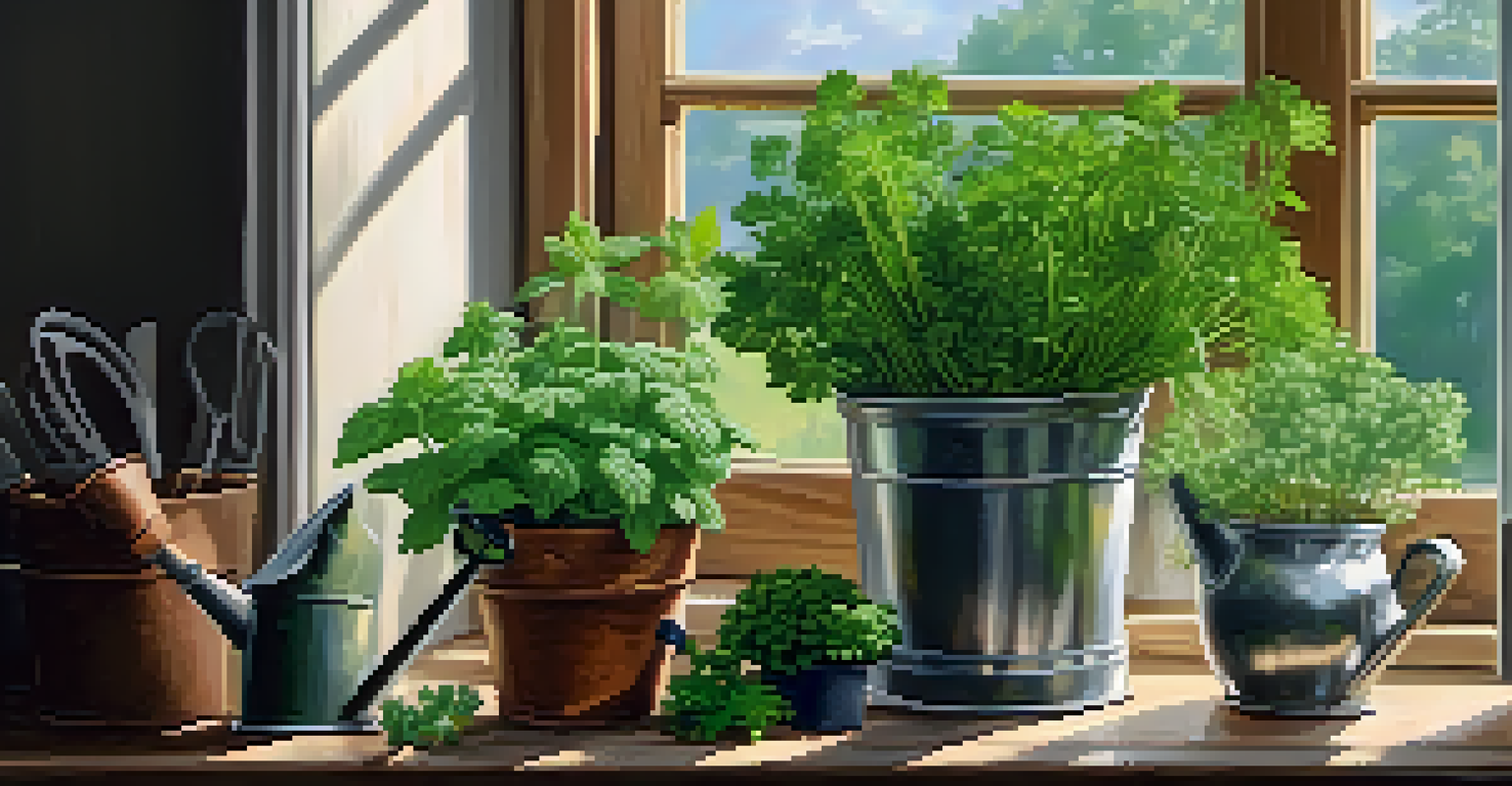The History of Herb Gardening: Cultivation Through Ages

The Origins of Herb Gardening in Ancient Civilizations
Herb gardening dates back thousands of years, with ancient civilizations like the Egyptians and Greeks cultivating herbs for medicinal and culinary purposes. These early gardeners recognized the value of herbs not just for flavor but also for their healing properties. For instance, the Egyptians used herbs like garlic and coriander in their daily lives, believing they had divine benefits.
Herbs are the medicine of the people.
The Greeks took herb gardening to another level, using it in both their cuisine and medicine. Renowned figures like Hippocrates emphasized the importance of plants in health care, laying the groundwork for modern herbal medicine. Gardens became places of learning, where knowledge about various herbs was shared and expanded upon.
As these ancient practices spread, they influenced other cultures, leading to a rich tapestry of herb gardening techniques that would evolve over the centuries. The connection between herbs, health, and culinary art was firmly established, setting the stage for future generations of gardeners.
Herb Gardening in the Middle Ages: A Time of Discovery
During the Middle Ages, herb gardening saw a significant transformation, especially in Europe. Monasteries became centers for herbal knowledge, where monks meticulously cultivated medicinal plants. They not only preserved ancient texts but also experimented with new varieties, turning their gardens into laboratories of sorts.

This period also marked the introduction of herb gardens in household settings. Families began growing their own herbs for cooking and remedy preparation, making these plants accessible to the masses. It was a time when having a kitchen garden was considered essential for both health and survival.
Herbs: Ancient Healing and Cooking
Ancient civilizations like the Egyptians and Greeks cultivated herbs not only for flavor but also for their medicinal properties, laying the foundation for modern herbal practices.
Moreover, the trade routes opened up during this era brought exotic herbs from far-off lands, expanding the variety of plants available to European gardeners. This blend of local and exotic herbs enriched culinary practices and laid the groundwork for the diverse herb gardening traditions we see today.
The Renaissance: A Revival of Interest in Herbs
The Renaissance brought about a renewed fascination with nature and the arts, leading to a blossoming of herb gardening. Artists and scientists alike sought to study and depict the beauty and utility of herbs, recognizing their importance in both gardens and kitchens. This era saw the emergence of detailed herbals, illustrated books that documented various plant species and their uses.
The greatest gift of the garden is the restoration of the five senses.
Garden design became more formalized, with an emphasis on aesthetics alongside functionality. Herb gardens were often laid out in geometric patterns, incorporating both culinary and medicinal plants. This shift not only made gardening visually appealing but also highlighted the connection between herbs and human creativity.
As the interest in botany grew, herbalists began traveling the world, seeking out new species and knowledge. This exploration led to the introduction of many herbs into European gardens, enriching the culinary landscape and enhancing herbal medicine practices.
Herb Gardening in the Age of Enlightenment
The Age of Enlightenment brought about scientific advancements that influenced herb gardening practices dramatically. Botanists like Carl Linnaeus introduced systematic classification, making it easier to understand and cultivate various herbs. This scientific approach helped gardeners select the right plants for their specific climates and needs.
Public gardens and botanical societies also began to flourish during this time, creating communities centered around the appreciation of plants. These gatherings allowed for the sharing of knowledge and techniques, further enhancing the art of herb gardening. People were now more aware of the medicinal benefits of herbs, leading to a surge in their popularity.
Middle Ages: Monasteries and Home Gardens
During the Middle Ages, monasteries became hubs of herbal knowledge, while households began cultivating their own herbs for cooking and remedies, making them accessible to the general public.
Moreover, the increasing exploration of the New World introduced a plethora of new herbs to Europe, enriching the existing gardening practices. This period laid the foundation for modern horticulture, emphasizing the importance of both science and community in gardening.
The Industrial Revolution: A Shift in Herb Gardening Practices
The Industrial Revolution marked a significant turning point in herb gardening, as urbanization changed how people interacted with the land. Many moved to cities, leading to a decline in traditional gardening practices. However, this transition also sparked a new interest in cultivating herbs in smaller spaces, such as balconies and window boxes.
As people sought to reconnect with nature amidst the urban hustle, herb gardening became a popular hobby. The availability of seed catalogs and gardening tools made it easier for those in cities to start their own herb gardens, even in confined spaces. This accessibility helped revive interest in cooking with fresh herbs, influencing culinary trends.
Additionally, the rise of the organic movement in the latter part of the Industrial Revolution fostered a deeper appreciation for natural growing methods. Gardeners began to prioritize the health of their plants, the soil, and the environment, leading to a resurgence of interest in traditional herb gardening techniques.
The Modern Era: A New Wave of Herb Gardening Enthusiasm
Today, herb gardening has surged in popularity, fueled by a growing interest in sustainability, health, and culinary exploration. From backyard gardens to community plots, more people are embracing the idea of growing their own herbs. This trend is often tied to the farm-to-table movement, where fresh, homegrown herbs enhance the quality of meals.
With the rise of social media, sharing herb gardening tips and recipes has never been easier. Platforms like Instagram and Pinterest are filled with vibrant images of herb gardens, inspiring others to start their own. The accessibility of information has transformed how people view gardening, making it a relatable and achievable goal.
Modern Interest: Sustainability and Health
Today, the rise of sustainability and culinary exploration has led to a renewed enthusiasm for herb gardening, with more people growing their own herbs at home.
Moreover, the modern gardener is more informed than ever, often opting for organic and heirloom varieties. This shift not only promotes biodiversity but also encourages a deeper connection to the food we eat and the plants we grow, making herb gardening a fulfilling and rewarding practice.
The Future of Herb Gardening: Trends and Innovations
As we look to the future, herb gardening is poised to evolve further with technological advancements. Innovations like vertical gardening and hydroponics allow urban dwellers to grow fresh herbs in limited spaces. These techniques not only maximize yield but also make gardening accessible to those with less outdoor space.
Sustainability remains a key focus, with more gardeners adopting eco-friendly practices. From using compost to rainwater harvesting, the emphasis on environmental responsibility is shaping how herbs are cultivated. This movement encourages a holistic approach to gardening, integrating care for the planet with personal health.

Furthermore, the interest in culinary herbs continues to grow, with chefs and home cooks alike experimenting with unique flavors. As new trends emerge, such as foraging and wild crafting, the future of herb gardening promises to be as dynamic and diverse as its rich history.